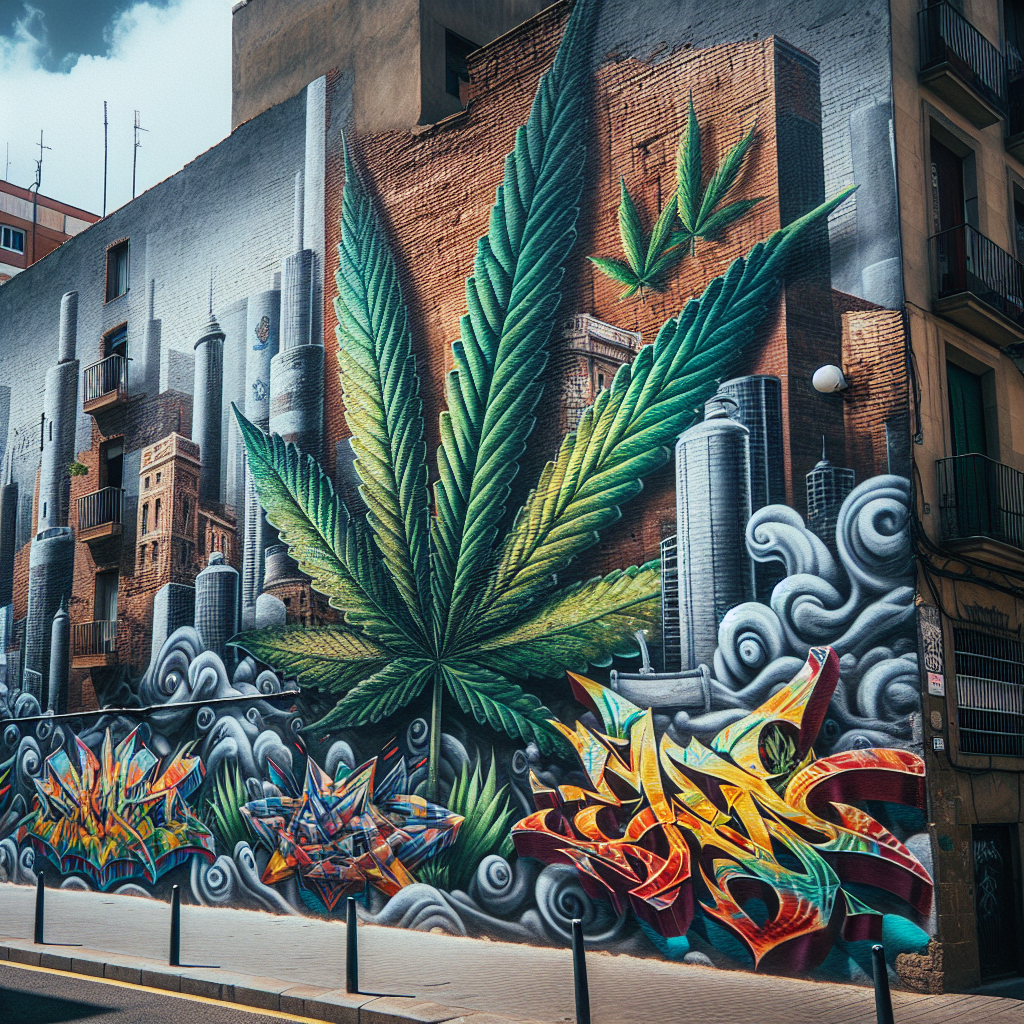What is cannabis-themed graffiti and street art in Barcelona?
Cannabis-themed graffiti and street art in Barcelona is an urban artistic expression that blends messages from cannabis culture with the visual language of street art. It comprises murals, stencils and multicoloured pieces that adorn façades and public spaces, celebrating the city’s local identity and cannabis tradition.
History of cannabis street art in Barcelona
Barcelona has a long tradition of urban art dating back to the 1990s, when the first graffiti artists began painting walls in El Raval and El Born. Following the partial legalisation of cultivation and consumption within social clubs, a thematic current emerged focused on the cannabis plant. Artists such as Sam3 and Btoy incorporated cannabis iconography into some of their murals, integrating leaves and elements associated with the green movement.
Recommended areas and routes for cannabis graffiti
If you want to discover these pieces in situ, here are several routes through neighbourhoods where cannabis art flourishes on every corner:
- El Raval: Known for its alternative vibe, home to large-format murals on Carrer Joaquín Costa.
- El Poblenou: The 22@ district—an innovation hub where graffiti artists combine technology and cannabis in their creations.
- Gràcia: Pedestrian streets with cannabis-themed stencil art in squares and inner courtyards.
- Gòtic: A maze of alleyways with ephemeral works painted on doors and metal shutters.
How to plan your route
- Check collaborative maps online.
- Visit galleries and cafés where temporary exhibitions are often held.
- Respect the surroundings—never alter or damage original pieces.
Meaning and messages behind the green art
Beyond visual appeal, each mural conveys a message of freedom, advocacy and connection with nature. Cannabis leaves become metaphors for personal growth and social resilience. Some artists integrate quotes about responsible home growing or historical references to the cannabis movement in Spain.
Tips for enjoying responsibly
- Wear comfortable footwear and bring water if you’re covering several neighbourhoods.
- Do not photograph private property without permission.
- Be mindful of local norms: don’t block pavements and don’t leave litter.
- Complement your walk with visits to cannabis social clubs with legal registration via Cannabis in Barcelona.
How Cannabis in Barcelona supports this movement
At Cannabis in Barcelona we champion the value of cannabis street art by promoting guided routes, educational content and collaborations with local artists. We help you get invitations to social clubs where, after registering, you can exchange impressions with other enthusiasts while discovering new works.
Summary
Cannabis-themed graffiti and street art in Barcelona is a cultural expression that unites the city’s cannabis tradition with urban creativity. From El Raval to Gràcia, these works transmit messages of freedom and respect for the plant. Plan your route responsibly and use our resources at Cannabis in Barcelona to delve deeper into this fascinating visual journey.
Frequently Asked Questions
Is cannabis graffiti legal in Barcelona?
Graffiti requires a municipal permit to be legal. Many street-art pieces are authorised on civic or sponsored walls, but painting on private property without consent is subject to penalties.
Where can I see the best cannabis murals?
Recommended areas include El Raval, Poblenou and Gràcia. You’ll also find occasional pieces in the Gòtic and El Born. Check collaborative maps for exact locations.
Can I take part in cannabis street-art projects?
Yes. Any artist can propose a project to cultural associations or request legal walls through the City Council. At Cannabis in Barcelona we collaborate with collectives that facilitate these processes.
Are there organised tours focused on cannabis art?
There are independent routes created by urban guides, and some cannabis social clubs run themed walks. We’ll help you connect with these initiatives after you register on our platform.
How can I respect the urban environment during my visit?
Respect public furniture, don’t obstruct the way, don’t photograph interiors without permission and avoid leaving waste. This helps preserve the works for future visitors.

